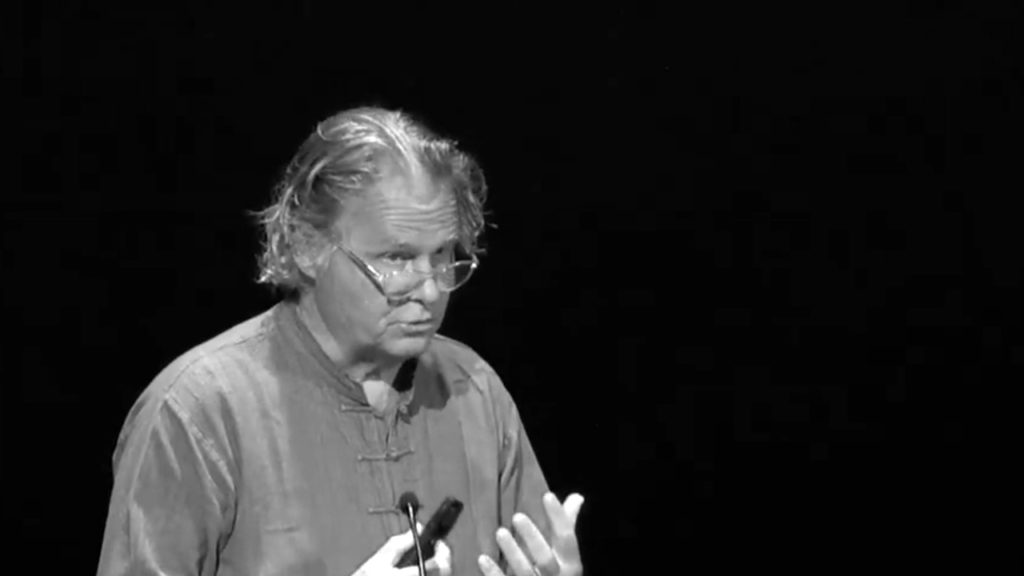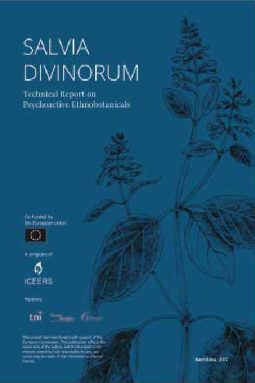The anthropologist Wade Davis began his lecture at the World Ayahuasca Conference by acknowledging how the conference itself — a gathering of 1,400 people to contemplate this extraordinary plant — is a metaphor for the incredible resurgence of research and passion around all sacred plants that is happening profoundly around the world.
When asked if he is optimistic about the world, Davis always responds that pessimism is an indulgence, despair, and insult to the imagination.
According to Davis, there’s one ingredient that has contributed to the great transformation we’ve witnessed during the last generation that is consistently expunged from the record – the fact that millions of people in many nations have been taking psychoactive substances. Wade recognizes he understands the wonder of culture thanks to personally having been flung before the gates of awe.
“Our parents, back in the 60’s, always said to us: ‘don’t take these things, you’ll never come back the same.’ But they didn’t understand that was the entire bloody point,” he shares.
Davis was very fortunate to meet the legendary botanical explorer Richard Evan Schultes. When he was 19, he went into Schultes’ office and said that he wanted to go to the Amazon and collect plants. “Well, son, when do you want to go?” was his answer. Two weeks later, Davis was in the jungle. Schultes gave three pieces of advice for him, the third of which was not to come back from Colombia without having tried yagé.
According to Wade, the person who first collected a specimen of Psychotria viridis was William Burroughs, the famous author. What Davis finds so interesting is that when people like Shultes, Borroughs and himself first encountered ayahuasca, they tended to have a sense of it that was shared by many indigenous people.
The metaphors used by indigenous people, Davis recounts, are not pleasantries – they were metaphors like “you’re at the breast of a jaguar woman, nursing from her tit when she drags you from that tit, and flings you into a pit of vipers.”
Thus, ayahuasca is not for the faint-hearted.
Wade Davis and ayahuasca
“If you had asked me back then, in 1974, to name the South American entheogen that would have caught the wind of the zeitgeist 50 years later and attract 1400 people to a conference here in Girona, I have to confess that yagé would not have topped the list,” he says.
At the time of the European contact, the Amazon was not an empty forest but a thriving civilization of perhaps ten million people. The question that has haunted scholars and anthropologists was whether there is a place somewhere in the Amazon where the echoes of those ancient civilizations can still be heard. And Davis’ answer is yes: in the remote reaches of the Northwest Amazon of Colombia, in the homeland of the Barasana, Macuna, Tanimuka, and all the peoples of the Anaconda.
When Davis first went there in 1974 he felt like it was a place where something important had happened, but a very long time ago. It was place exhausted by missionaries, the impacts of the rubber trade. A forgotten place.
Then, Davis recounts, something extraordinary happened. In 1985, the president of Colombia told Martín von Hildebrand to “do something for the Indians.” In five years, he secured legal land tenure for an area of land the size of the United Kingdom for the 57 ethnicities of the Colombian Amazon. These lands were encoded in perpetuity in the 1991 constitution. In the coming years of conflict in Colombia, a new dream of culture was born in this protected region.
In that region, marrying amongst your own language was to commit incest. This belief meant that the patterns of these societies facilitated not conflict and war but trade, exchange, and peace. According to Davis, these patterns are what underlies the importance of the annual rituals that bring people from different communities together to meet each other and gather in worship.
Back to San Miguel
In 2006, Wade Davis went back to San Miguel, a community he had visited in the 70’s and almost everything had changed − reverence had returned and the place had found its essence.
On this trip, Davis was joined by anthropologist Steven Hugh-Jones who had lived during the 60’s among the Barasana. In the 80’s he was part of a film where he predicted the ultimate demise of this tribe. When he visited it again with Wade, he couldn’t believe what he was seeing − the only thing that had disappeared were the missionaries.
Hugh-Jones explained to Wade Davis that there’s no beginning or end in Barasana thought, no linear progression of time, destiny, or fate. Every object is subject to many levels of intention and analysis – “a stool is not a symbol of a mountain, it is the mountain upon which sits the shaman.”
All of nature in these regions – the rivers, the trees, the mountains – is saturated with meaning and cosmological significance. For these tribes there is no separation between nature and culture.
These cosmological ideas have clear consequences, for example, no food can be eaten before it has passed through the hands of the shaman. Everything is grounded in reciprocity. All of these ideas and restrictions, Davis says, amount to nothing other than a complex land management plan. One that was the foundation that once allowed for over 10 million indigenous people to live in the upland forests of the Amazon. And, where all of this comes together is in ritual.
“White people see with their eyes, but the Barasana see with their minds,” said Davis.
What then, Davis asked, does this tell us about this culture and its place in history? It tells us how traditions based on knowledge acquired through time and intense study and initiation and on ritual are able to live in balance within the Amazon Basin. These communities both echo the ancient past of pre-Columbian civilizations and point the way forward with a model of how human communities can live and thrive.
Categories:
Ayahuasca
, NEWS
, AYACONFERENCE
Tags:
ayahuasca
, Amazon
, World Ayahuasca Conference


